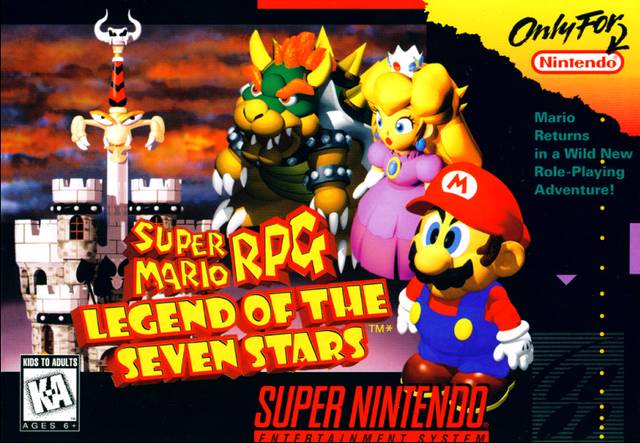

And your health, of course, is measured by a numbered hit point gauge. Special moves are more dynamic and potentially more deadly, but they drain away your flower points (the equivalent to magic points in other RPGs). As in Final Fantasy or Chrono Trigger, battles play out by selecting options from a menu and watching the resulting animations that occur - you can use a basic attack, strike a defensive posture, unleash a special move or use an item by hitting one of the four face buttons on the Classic (or GameCube) Controller. Which will take you to the next, more RPG-esque phase of Super Mario RPG - turn-based battles. While you're getting your bearings with isometric movement, though, you'll likely run Mario straight into an enemy or two. But that's not a game-breaking complaint, and not one that proves to be as annoying as in some other isometric titles. The shift in perspective can be a bit perplexing, as it's sometimes difficult to properly gauge the depth of some elements in the environment. Quite a change from just scrolling to the left or the right. Sometimes also called the 3/4 view, it displays every environment at an angle and gives Mario the ability to walk or run in any of eight directions within it. A key difference, though, is that the game is presented with a different perspective than any other Mario title - the isometric viewpoint. The core gameplay is based in Mario's platforming roots, as he runs through areas avoiding enemies, jumping around and hitting floating blocks. Mario's adventure then takes him on a circuitous route through the reimagined Mushroom Kingdom, as he gathers strength, information and new allies before ultimately challenging the leaders of the Smithy Gang face to face. Yeah, sure.Įach face button is assigned to a different action in Super Mario RPG's battles. The weapon, which towers above the top of the fortress and creates the game's central set piece, declares that the Smithy Gang has taken control of the land and there's nothing that any red-capped plumber can do about it. Things quickly take an unexpected twist, though, when Mario's rescue attempt is defeated by the arrival of another, different villain - an enormous talking sword that plunges itself into the middle of King Koopa's castle. The story begins as any other Mario game, with the Princess getting kidnapped by Bowser and our mustachioed hero heading off in hot pursuit. Though many fans in the mid-'90s were skeptical that it could happen, Mario made the transition to the RPG genre in excellent form. An adventure/role-playing title, it was the innovative result of a corporate collaboration - Nintendo lent its main mascot and his Mushroom Kingdom world to Squaresoft, most known at the time for SNES RPGs like Final Fantasy III and Chrono Trigger, and the company did a remarkable job at expanding the hero's hop-and-bop platforming gameplay into a fully-realized role-playing experience. Super Mario RPG: Legend of the Seven Stars is one of the most acclaimed games to have ever worn Mario's name.


 0 kommentar(er)
0 kommentar(er)
